Module 7.3 Creating Safe Outdoor Environments
Learning Objectives
By the end of this module, you should be able to:
- Illustrate why outdoor play is essential to health and well-being.
- Describe elements of a safe outdoor play space.
- Recognize the importance of impact absorbing surfacing under equipment.
- Explain what use zones are.
- List age-appropriate outdoor play equipment for each age group.
- Identify hazards on outdoor play equipment.
- Develop a safety checklist to monitor the safety of the outdoor space.
- Outline ways to protect children from the weather, the sun, insects, drowning, and poisoning.
- Discuss how to keep children safe as pedestrians, in motor vehicles, and while on field trips.
Introduction
There are countless benefits to outdoor play for children. Research shows that children who play outside regularly have healthier body weight, improved vision, and immune function, reduced stress, better sleep, improved motor skills. There are substantial immediate and long-term health consequences for children who aren’t able to play outside or get enough physical activity such as increased obesity and chronic diseases. The research also shows us that kids who play outdoors have increased school readiness because outdoor play contributes to better social skills such as cooperation, increased attention span, improved school attendance, and improved brain development and cognition. Physical activity plays a critical role in supporting health and learning.
Being aware of the benefits of outdoor learning as they relate to overall health and school readiness is important so that educators remember that the outdoor environment is an essential extension of the indoor environment. All the learning that takes place indoors can also take place outdoors. Anything programs do indoors can have an outdoor component.
Consider for just a moment how a program can increase the benefits of outdoor play while also minimizing injury. Reducing risk does not mean limiting play equipment or enforcing rules that restrict children’s ability to move and explore their environment. An ideal playground is one that encourages children to challenge themselves while also preventing little risk for injury. In fact, studies show that playgrounds that are high-challenge, but low-risk are the very best at promoting the goals of outdoor learning. Children get more physical activity, develop better physical, cognitive, social skills and are happier and more resilient when their outdoor play environment is challenging and safe.
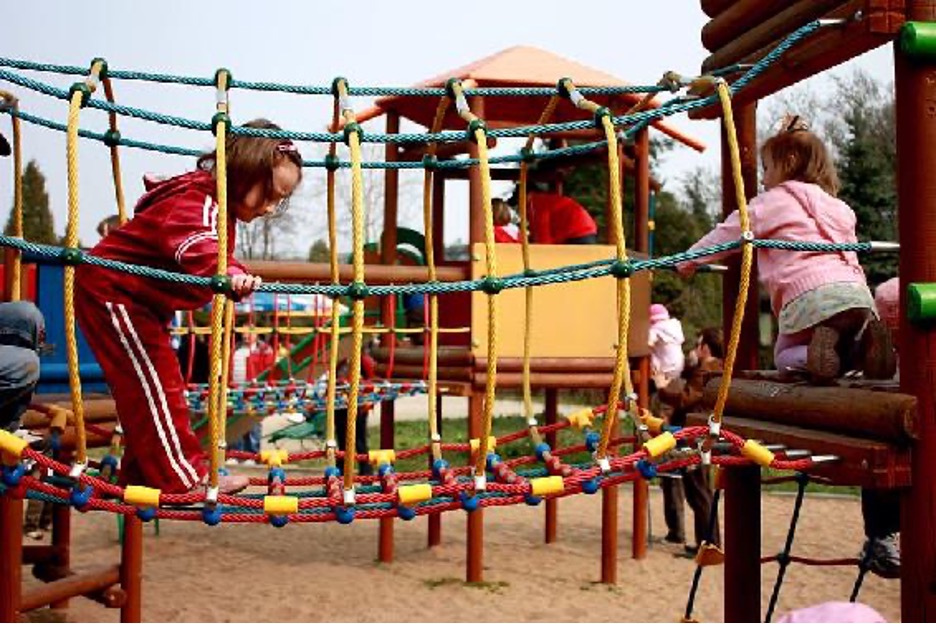
Indigenous Perspective
“Inuit advocate and educator, Rowan argues that Indigenous ways of knowing and being are essential for children’s outdoor learning. She speaks of thinking with land, water and ice, allowing access to Indigenous, and more specifically Inuit approaches, when planning and delivering land-based experiences. She describes her outdoor learning activity with preschool children, an Elder-educator, and staff going out on the land to search for avaalaqiat (willow branches) to prepare branch backpacks.
The pedagogy of such outdoor excursions is grounded in a worldview focusing on knowing and experiencing. “These dual elements are tukisiumaniq, which means building understanding or making meaning in life; and silatuniq, which means experiencing the world”. (Rowan, 2017). Together they bring forth the essence of outdoor play and learning. These Indigenizing elements of outdoor play add depth by making sense of the natural world that surrounds children.” (EECD, 2019)
Playground Safety
When designing an outdoor space for children, it is critical to reduce the risk of injury while increasing the challenge. The first step is knowing what aspects of the actual learning environment are most likely to cause injuries.
Falls from, into, or on equipment are the most common cause of injury. Falls are most likely to occur on equipment that is not appropriate for the age and development of the children. And injuries are most likely to occur when the surface on which a child falls is not sufficiently shock-absorbing. The equipment pieces that are associated with the most injuries include climbers, such as monkey bars or overhead ladders, swings, and slides. About 85% of all playground injuries occur on these three pieces of equipment. The most common cause of death on playgrounds is strangulation, that’s an injury that chokes the child.
It’s important to understand that injuries are not accidents. Most injuries are predictable and preventable. Programs can take steps to prevent serious injuries by:
- Choosing developmentally appropriate play equipment to ensure children do not fall from a high level and the challenges on the playground are matched with their ability.
- Installing proper surfacing to minimize the severity of an injury if a child does fall.
- Providing intentional and active supervision by maintaining close proximity to children, especially in places that are high risk for injury from a fall such as the slide or monkey bars).
- Encouraging safe behaviours by introducing safety habits to children.
Reinforcing these safe behaviours in an early learning and childcare program provides lifelong lessons about safety and injury prevention.
Designing for Safety
Safe outdoor play space starts with selecting and correctly installing safe and age and developmentally appropriate structures. The play space design should not be a hazard and should separate active play areas such as swings and slides from quieter activities such as the sandbox, nature-based learning, and dramatic play areas. Only equipment that is manufactured for public playgrounds or childcare facilities should be used. Playground equipment like Little Tykes brand or plastic sets for home use are not appropriate.
The Canadian Standards Association (CSA) has developed standards for materials, installation, equipment, surfacing, layout, and maintenance for public playgrounds.
24 (4). Every licensee shall ensure that, at each child care centre it operates, any outdoor play space, fixed play structure or surfacing under those structures that is constructed or renovated on or after August 29, 2016 meets the requirements set out in the Canadian Standards Association standard CAN/CSA-Z614-14, “Children’s playspaces and equipment”, as amended from time to time. O. Reg. 126/16, s. 18 (2).
(5) Every licensee shall ensure that at each child care centre it operates,
(a) a playground safety policy is developed that reflects the Canadian Standards Association standard mentioned in subsection (4) and indicates the roles and responsibilities of employees regarding safety on playgrounds;
(b) daily, monthly and annual inspections of the outdoor play space, fixed play structures and surfacing are conducted in accordance with the requirements set out in the Canadian Standards Association standard mentioned in subsection (4);
(c) a plan is developed on how issues or problems identified in a playground inspection will be addressed; and
(d) a playground repair log is maintained. O. Reg. 126/16, s. 18 (2). (O. Reg. 137/15: GENERAL)
Playground inspection kits are available for purchase from the Canadian Playground Safety Institute. The Institute also has Certified Playground Safety Inspectors who will complete a playground safety inspection on your behalf. Sample daily/weekly, monthly, and annual inspection reports can be found at Canadian Playground Safety Institute.
Importance of Impact Absorbing Surfaces
The playground surface is the material that lies under and around playground equipment. The surface material under the equipment should be able to cushion a child’s fall. Injuries from falls occur not because children fall, but because the surface on which they fall isn’t able to adequately absorb the impact of their fall. Proper surfacing is prevention of predictable injuries.
There isn’t a single best surface to use on playgrounds. The best surface is the one that:
- The program can afford
- The program is able to appropriately maintain
- Meets the needs of the children based on their age
- Is workable given the climate where the program is located
- Consistently meets the standard for depth that is based on the height of the equipment on the playground.
Surfaces such as asphalt, cement, dirt, and grass, however, are not acceptable surfaces. Grass is not an impact-absorbing surface. If a child falls onto grass, they are far more likely to get hurt than they are if they fall onto an appropriate impact absorbing surface.
There are two types of appropriate, impact-absorbing playground surfaces, unitary and loose-fill. Let’s look at each.
Unitary material such as tiles, mats, or a rubber surface is engineered to be sufficiently shock-absorbing. There are many options. If a program wants to use a unitary surface, it’s important that one is chosen for the appropriate height of equipment and that the manufacturer’s instructions are followed closely (and some require professional installation).
Loose fill surfaces, such as sand, pea gravel, shredded rubber, or engineered wood fiber and mulch, when installed correctly, will also safely cushion a child’s fall.
Programs need to consider how data can help inform a decision about which surfacing is best for a particular playground. It’s important to think about who will be using the space and for what.
- Some surfaces like pea gravel are not an appropriate choice for infants and toddlers who might put it in their mouths since it can be a choking hazard.
- Few of the loose fill materials are accessible for wheelchair users without significant accommodation, such as a special wheelchair. Engineered wood fibers provide a little bit better access, but solid or unitary materials are best if you have children on the playground with mobility impairments.
- Will the staff be able to maintain the playground surface? All loose fill surfacing required daily raking to maintain depth.
- Consider how tall the equipment is because sand and pea gravel can’t be used at fall heights that are greater than four to five feet.
- The climate is also an important consideration. Factor in temperature, wind conditions, and precipitation because they all impact the surface materials you choose.
- Sand can harden when frozen.
- Artificial surfaces can get really hot, in fact, hot enough to cause burns when they’re exposed to direct sunlight.
- Loose fill material, except for rubber mulch, compress about 25 percent over time due to use and weathering.
The protective surfacing must extend for the full use zone, which is the area under and around equipment where children might fall as a playground surface can’t protect a child who falls onto a hard object such as a tricycle instead of onto the protective surface.
Pause to Reflect 💭
Think of a local playground or playgrounds you played on as a child.
What type of surface was underneath the equipment?
Was it well maintained? Did it protect children from injuries due to falls?
Did the materials used cause any other hazards (such as overflowing sand that caused slipping or a surface that got too hot to safety touch skin)?
Use Zones
The use zone is the space that encompasses the activity/piece of equipment and the area around that activity/equipment that will keep children from colliding and provides enough separation between different pieces of equipment and types of play. It is also sometimes referred to as a fall zone. The use zone should be free of movable hazards like trikes and toys, rocks, and groups of children who might cluster and fixed hazards such benches.
Use zones vary depending on the size and the type of equipment. For most stationary equipment on the playground, the use zone should extend six feet in all directions (see Figure 2). Equipment that is taller than 30 inches should be at least nine feet from other pieces of equipment. And the use zone for swings should extend from the front and rear of the swings twice the height of the swing (see Figure 3).
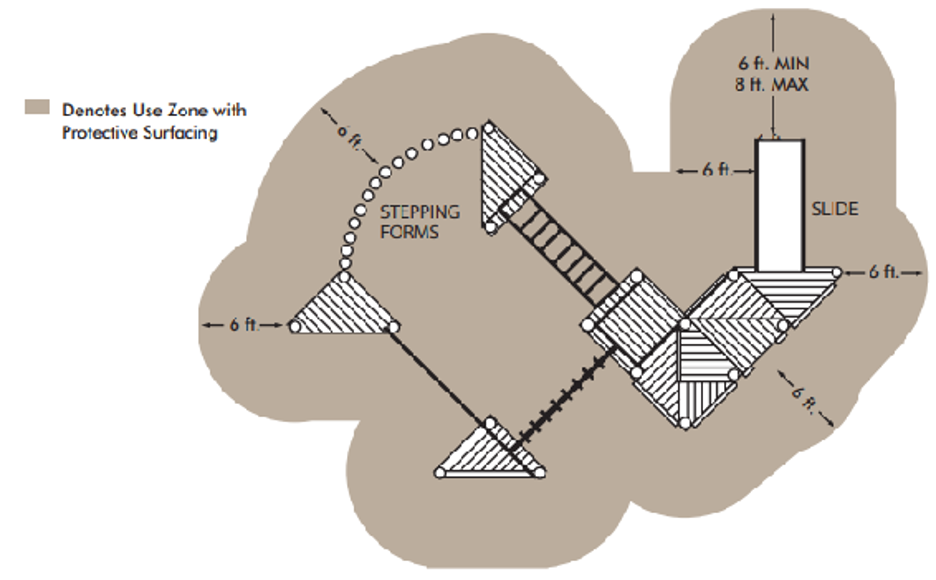

Age Appropriateness
Age-appropriate equipment provides children with opportunities to safely practice gross motor skills without putting them at risk for unnecessary injury. This takes us back to the notion of creating playgrounds that are high challenge but low risk. Children are less likely to fall when equipment is only used with the age group for which it is designed.
Age-appropriate labelling and date of manufacture labelling are requirements of compliance to the CSA Z614 “Children’s Playground Equipment and Surfacing” standard. Labels can be purchased from the Canadian Playground Safety Institute.
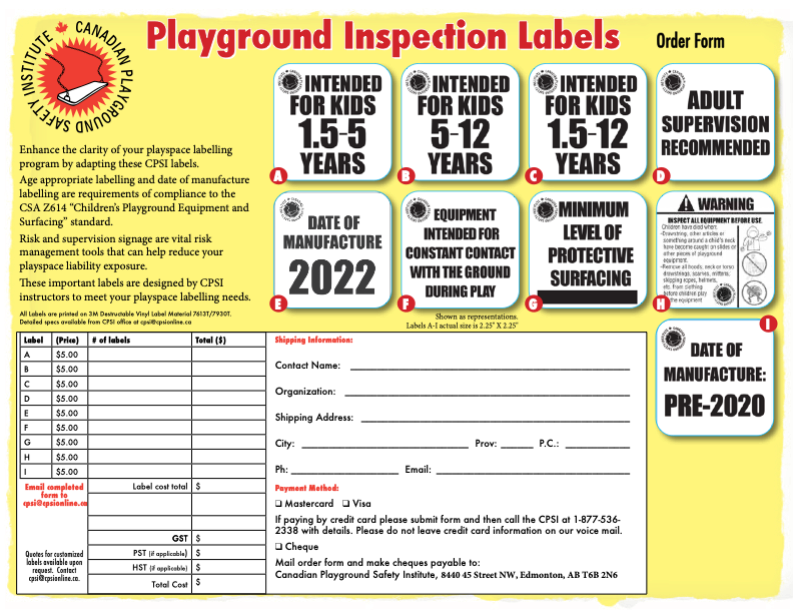
Hazards on Playgrounds
Gaps in equipment such as the space between the platform and the top of the slide or hooks can entangle clothing or entrap body parts, causing trips, falls, or strangulation. Head entrapment into gaps that are large enough for a child’s body to pass through (bigger than 3.5 inches) but too small for a child’s head to pass through (smaller than 9 inches) can injure a child’s neck or choke a child.
Equipment that spins and moves such as steering wheels or springs on rockers can pinch, cut, or crush fingers or other body parts. So, you want to make sure that any equipment that spins or moves is not accessible for little fingers. Broken parts or improperly installed equipment can cause injuries if the equipment tips over, breaks during use, or has sharp or loose parts that can cut or entrap a child. And railings to prevent falls can break if bolts are loose. See Table 1 for examples of dangers to watch for on playgrounds.
Table 1 – Playground Hazards
Playground Hazards178
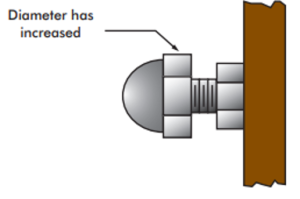
Example of a hazardous projection that increases in diameter from plane of initial surface and forms an entanglement hazard and may also be an impalement hazard. |
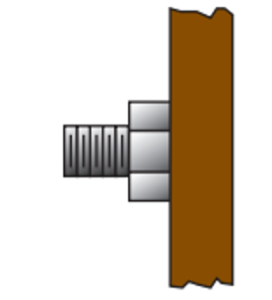
Example of a hazardous projection that extends more than 2 threads beyond the nut and forms an impalement/laceration hazard and may also be an entanglement hazard. |
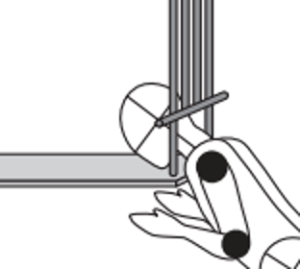
If the distance between the platform and bottom of the railing is between 3.5 and 9 inches, it is an entrapment hazard. |
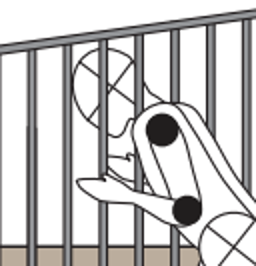
If the distance between an opening (such as this railing) is between 3.5 and 9 inches, it is an entrapment hazard. |
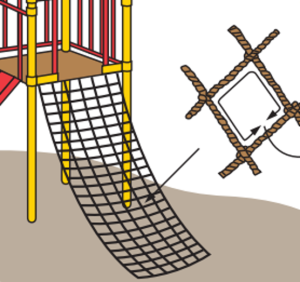
Entrapment hazard: when the perimeter of the net openings is between 17 inches and 28 inches |
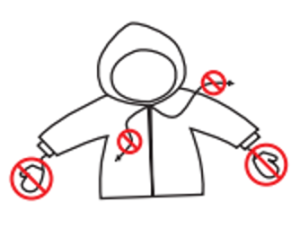
Strings on children’s clothing can create entanglement hazards and hood drawstrings can create strangulation hazards. |
Pause to Reflect 💭
Think of that playground again.
Did it offer adequate use zones around the different pieces of equipment? Was the equipment used by the appropriate age groups (or did older children play on equipment designed for younger children or vice versa)?
How well did it protect children from the hazards mentioned (trips and falls, entrapment, impalement, entanglement, or strangulation)?
Riding Toys
All children older than age 1 should wear properly fitted and approved helmets when they are riding toys with wheels or using any wheeled equipment. Helmets should be removed as soon as children stop riding the wheeled toys or using the equipment. Children’s bike helmets sold in Canada must meet the requirements of the Canadian Safety Association (CSA) or the American National Standards Institute (ANSI) or Snell certification and should pass the three-point check for a proper fit as shown in Table 2.
Table 2 – Three Point Check for Proper Helmet Fit
Three point check for proper helmet fit:
|
 |
Keeping Children Safe by Monitoring
Early learning and childcare programs are required to develop a routine inspection process to identify and prevent hazards. Outdoor play spaces are subject to a lot of wear and tear from use, sometimes misuse, from weather conditions. So, even if a program has correctly installed safe and age and developmentally appropriate equipment, it still requires regular inspections and maintenance.
According to the Child Care Centre Licensing Manual (2019), all programs licensed under the Child Care and Early Years Act must conduct:
- Daily Visual Inspections: The CSA standard requires that a daily visual inspection be carried out by the licensee or staff to identify defects, emerging problems and check the entire playground for:
- Hazardous debris or litter;
- Damage caused by vandalism, including operation of gates;
- Strings and ropes of any kind and removing them.
- Detailed Monthly Inspections: The CSA Standard requires that a detailed inspection shall be carried out every month and the results and actions taken entered in a permanent record that can be examined. These inspections must include, but are not limited to:
- Checking for any damage and wear, (i.e., broken, or missing components to equipment, anything tied to or added on to the equipment, or other features caused by vandalism or wear);
- Checking for any broken or missing handrails, guardrails, stairs, or ladder rungs, etc.;
- Checking for damaged fences, gates and retaining walls.
- When defects are observed, the defects must be documented, immediately reported within the organization, and repaired as soon as possible.
- The monthly inspection should include seasonal considerations to assess the playground site and equipment in preparation for summer or winter use.
- Any checklist may be used for general maintenance inspections (i.e., daily, and monthly). Hazards or deficiencies should be identified on the checklist. Items that require repair or replacement must be noted in a playground repair log. Every effort should be made to immediately address any defect. If the defect cannot be immediately addressed, all reasonable steps should be taken to restrict children’s access to damaged equipment.
- Annual Comprehensive Inspections and Written Reports – Playgrounds with Fixed Play Structures: The CSA standard requires that every year a comprehensive inspection and a written report shall be completed by the licensee or a designate. The annual inspection involves a comprehensive analysis of play space maintenance, potential defects, and faults; and includes details regarding maintenance and repair considerations.
- The inspection must include an assessment of the technical requirements set out in the standard for playground structures and the results of protective surfacing testing and any actions taken.
- Once a comprehensive annual inspection report is completed, the licensee must document a plan of action, including timeframes, based on the information contained in the report.
- The person inspecting the playground must have the necessary training and equipment to accurately assess the requirements set out in the Canadian Standards Association standard CAN/CSA-Z614-14. If there are deficiencies in an annual comprehensive written report, the licensee may be required to have the playground inspected by a Certified Playground Safety Inspector. (Child Care Centre Licensing Manual, 2019)

Active Supervision
The most valuable tool for reducing playground injuries is active supervision (which is also addressed in Module 7.1). Educators should be always actively supervising children. Active supervision is a specific child supervision technique that always requires focused attention and intentional observation of children.
Active supervision includes six basic strategies:
- Plan and set up the environment to always ensure clear sightlines and easy access to the children and the equipment while they’re out on the playground.
- Teachers are positioned among the children in their care, changing positions as needed so that they can keep an eye on the children.
- They are communicating about which children they’re observing and any issues that divert their attention so that they know other teachers are taking up the slack and watching the other children.
- Teachers are watching, counting, and always listening to children
- They also use their knowledge of each child’s development and abilities to anticipate what a child might do or to anticipate areas on the playground where a child might need some additional support.
- And if needed, they get involved and they redirect children when necessary or they provide that additional support if needed.
Other Safety Considerations for the Outdoors
In addition to designing and maintaining a safe playground for children, you also need to monitor environmental factors such as weather, the sun, insects, animals, poisonous plants or materials, and water.
Sun Safety
Children need protection from the sun’s harmful ultraviolet (UV) rays whenever they’re outdoors. Shade and sunscreen protect children from sun exposure and can help to reduce the risk of some skin cancers.
According to the Centers for Disease Control and Prevention (CDC), even a few major sunburns can increase the risk of skin cancer later in life.
The Canadian Paediatric Society recommends the following guidelines regarding sun safety and the selection and application of sunscreen:
- When possible, stay indoors or in the shade during the hottest time of the day, 10 a.m. to 2 p.m.
- Always protect babies from the sun:
- Limit sun exposure, especially during peak hours.
- Cover babies in loose clothing and make sure they are wearing a hat.
- If using a stroller, a sunshade should be used to cover the baby.
- Properly apply a small amount of sunscreen with SPF 30 (sun protection factor) on exposed areas. Note that sunscreen is not recommended for babies under 6 months old, because they can rub it in their eyes and mouth.
- Make sure outdoor play areas have a shady spot. This could be trees, built structures or a sunshade sail.
- Children should wear a sun hat with a wide brim and back flap to protect the back of the neck, sunglasses with 100% UV protection (“broad spectrum”) and loose cotton clothing to protect skin from the sun’s rays. Only UV-rated clothing protects the skin under it completely from the sun. Sunscreen should be applied to the entire body if regular clothing is being worn.
- At least 30 minutes before heading outside, apply sunscreen with an SPF of at least 30 on all areas of a child’s skin that will be exposed to the sun. Use a lip balm with SPF 15 as well.
- Remember to put sunblock on ears, nose, back of neck and legs, and tops of feet.
- Reapply sunscreen every 2 to 3 hours, and after swimming or vigorous play. (Canadian Paediatric Society, 2021)
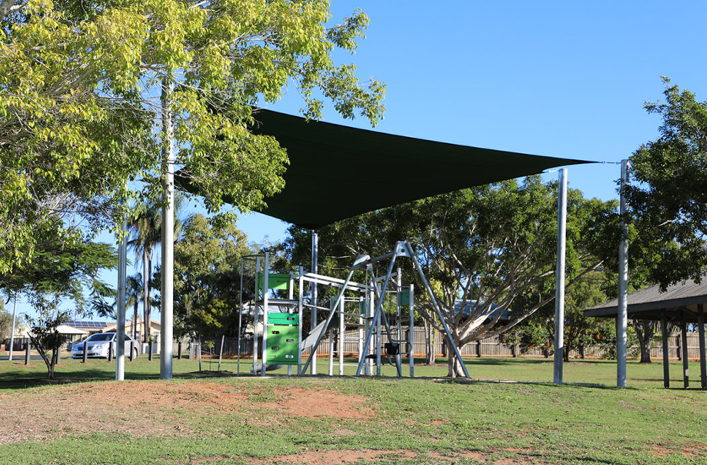
Hydration
Toddlers and preschool children cannot regulate their body temperatures well and need additional water when the weather is hot. Provide regularly scheduled water breaks to encourage all children to drink during active play, even if they don’t feel thirsty. Fluoridated water (bottled or from the faucet) can reduce the risk of early childhood caries and is the best drink choice for young children in between meals. Each child should be provided their own cup or bottle. Staff may offer additional breast milk or formula to infants as water is not recommended, especially for infants younger than six months of age.
Weather
Teachers should be aware of local weather conditions and monitor the temperature, humidity, and air quality. To stay up to date on current conditions:
- Check the Air Quality Index and limit play outdoors when there is poor air quality.
- Check the forecast for the UV Index to limit exposure to the sun on days when the Index is high.
- Check current and forecasted weather to be aware of the temperature and other weather conditions that may make the outdoors hazardous to children’s health.
Protecting Children from Heat-Related Illness
Children’s bodies heat up three to five times faster than adults (Safe Kids Worldwide, 2020). It’s important to help children during hot weather. Here are some tips from the Canadian Paediatric Society:
- Encourage your child to drink plenty of fluids, especially water. Children don’t necessarily feel thirsty while at play.
- Be alert for signs that your child is experiencing heat illness and needs to go inside. These include thirst, fatigue, leg or stomach cramps, and cool, moist skin, which can be a sign of heat exhaustion. Bring your child inside or into a cool, shady area, and offer frequent small sips of water. Removing extra clothing and fanning can help your child cool down slowly (Canadian Paediatric Society, 2021).
Protecting Children from Cold Weather
There is no set time that is safe for children to play safely when the weather is cold. Teachers will have to use their best judgment.
When playing outdoors in the cold it is important for children to bundle up. They are at greater risk for frostbite than adults. They should dress in layers. Wet clothing should be removed. Scarves must be tucked into coats to avoid becoming a strangulation hazard. Gloves/mittens and socks must stay dry to protect fingers and toes from frostbite. Children should come in periodically to warm up. And even though it is cold, sunscreen and hydration are still important.
Protecting Children from Insects
Children and adults can be protected from insect bites by:
- Checking for and removing insect nests and spiders under slides, in bushes and in the ground.
- Making sure there is no standing water near play areas for mosquitoes to lay their eggs.
- Checking for ticks after outdoor play. The Center for Disease Control provides instructions about Tick Removal (see Figure 7).
- Consulting with the local Public Health Unit about whether to use insect repellent when local insects are likely to carry diseases.

Water Safety in Early Learning Environments
Water safety presents a particular challenge to childcare providers. Waterplay tables, wading pools, toilets, buckets, or other containers are places where top-heavy young children can drown. Water safety presents its own set of challenges to the childcare environment.
Children between the ages of 1 and 4 years are at greatest risk from drowning. These children are just learning to walk and explore. They excel at getting out from under the watchful eye of the provider.
Wading pools also have the potential for spreading disease, so they are not recommended for use with young children. Instead, the use of sprinklers is recommended.
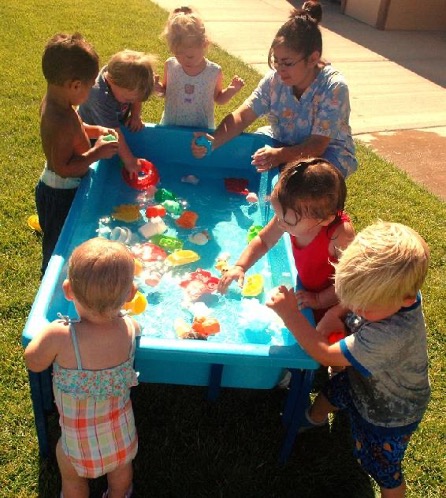
Reducing the Risk of Drowning in Early Learning Environments
-
Reduce water hazards and prevent access to water
- Safety precautions must be taken to keep any water in the childcare environment as risk-free as possible.
- Any body of water poses a threat and young children can drown in as little as one inch of water.
- The indoor and outdoor environments should be thoroughly screened to detect hazards that may lead to the risk of drowning.
-
Promote safe behaviours
- Because children move quickly, are curious and do not understand their physical abilities, they must be watched carefully around even small bodies of water.
- Most drownings occur within a surprisingly short period of time.
- Never, ever, leave a child alone, even for a moment, when there is a body of water in the environment.
- When near water, always reinforce safety for the children.
- Plan water play when children are the least tired and most alert.
- Teach children safe practices playing in the water.
- Always have a telephone within easy reach.
-
Learn proper response if there is a water emergency and act immediately
- Pull the child from the water and place the child on his/her back.
- Check for breathing, and clear mouth and nose of any obstructions.
- Get another adult to call for emergency help.
- Begin rescue breathing or CPR as needed until the child is revived or help arrives.
Preventing Drownings
- Never leave a child alone in or near any body of water (tub, wading pools, water table or even a bucket).
- Always provide careful, direct, and constant supervision of young children if there is a body of water present in the environment.
- Never expect swimming instruction to eliminate the risk of drowning in children.
- Supervise children in the water even if they are wearing flotation devices. These devices are not substitutes for constant supervision.
- If a portable wading pool is used in a group childcare setting (although it is not recommended), it should be filled with water, used immediately, drained and put away as soon as children leave the pool.
- Never leave infants or children unattended around five-gallon buckets containing even a small amount of liquid. Empty buckets when not in use.
- Children with seizure disorders are particularly vulnerable to drowning.
Preventing Poisoning Outdoors
This topic was covered in Module 7.2, but it is important to note that poisonous materials are also found outdoors, including some of the plants in Table 3.
Storing Toys, Materials, and Equipment Safely
To protect toys, materials, and equipment from the elements, they should be safely stored when not in use. Keep storage areas clean and dry to prevent mold and infestations of insects, spider, rodents, or other pests.
Pedestrian Safety
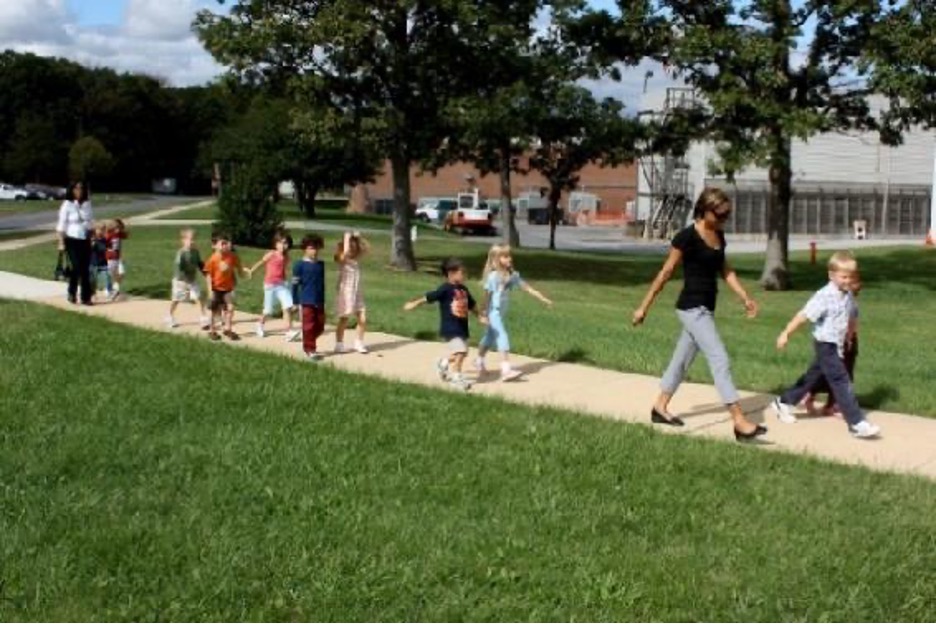
Before going on a walk, educators should talk to children about the safety practices that they will be using (see Table 1). Children need close adult supervision and proximity while walking because they may do the unexpected (like suddenly dart off the sidewalk).
Safety Practices while walking
- Always walk on the sidewalk (if there is one).
- If there is no sidewalk, walk facing traffic.
- Be safe and be seen (bright clothing during the day, lights and reflectors at night)
- Walk safely. Don’t run, don’t push or roughhouse. Be aware and don’t let toys distract you.
- Watch for cards pulling in and out of driveways. Make sure drivers make eye contact with you.
When it is time to cross the street, show children a good place to safely cross the street. Explain how to safely cross the street (see Figure 10). If there is a button at the crosswalk, have them push it.
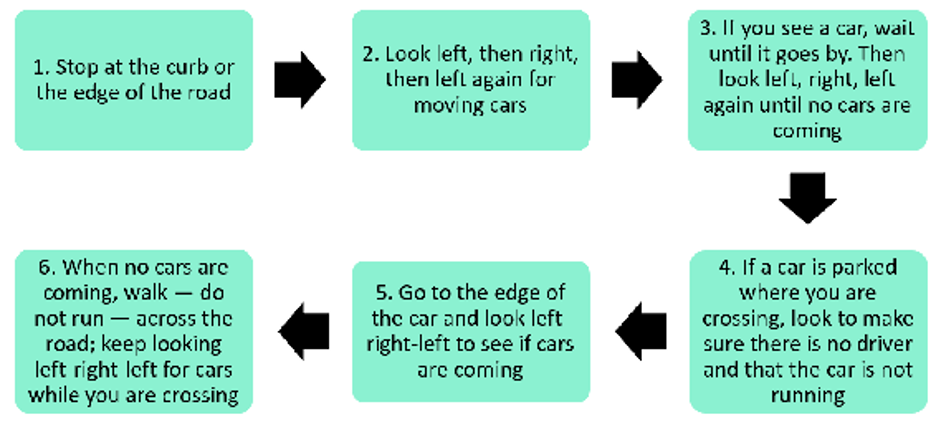
Motor Vehicle Safety
Any licensed driver transporting children should be trained in safety practices and if alone, have CPR and first aid training. They should have a safe driving record and their license should authorize them to drive the type of vehicle being driven.
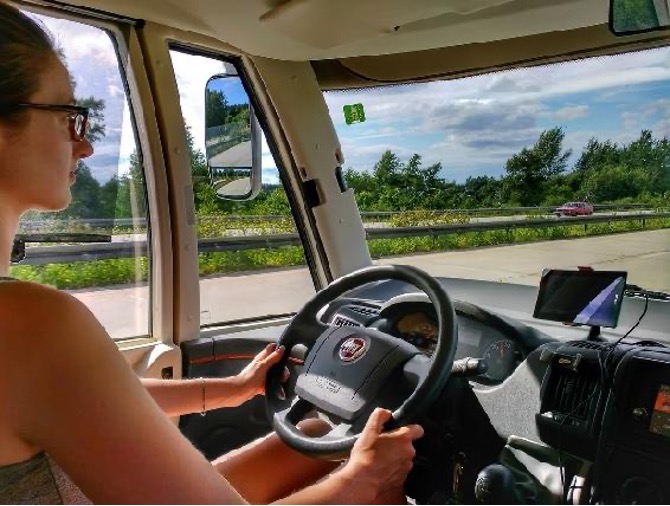
The interior of vehicles used to transport children for field trips and out-of-program activities should be maintained at a temperature comfortable for children. All vehicles should be locked when not in use, headcounts of children should be taken before and after transporting to prevent a child from being left in a vehicle, and children should never be left in a vehicle unattended.
Tips for Safe Field Trips
Early learning and childcare programs can be enriched through carefully planned field trips. It is important that the destination be appropriate for the age and developmental level of each child that will be attending. Any special arrangements needed to make sure that all children can safely be included should be made ahead of time.
All staff and background-checked volunteers that will be attending should be made familiar with the travel plans, the field trip location, rules, and their responsibilities. The children should also be prepared for the trip. Educators can review and practice safety precautions and emergency procedures.
Families must be made aware of the field trip and provide consent for their child to attend. Emergency information for every child must be always kept with staff off-site. An accurate list of all children in attendance must be kept as well (at the field trip destination and at the school/center).
Adults should be assigned small groups of children. All adults should be made aware of the chosen regrouping location and checkpoints.
Important Things to Remember
- An ideal playground is one that encourages children to challenge themselves while also preventing little risk for injury. Playgrounds that are high-challenge, but low-risk are the very best at promoting the goals of outdoor learning. Children get more physical activity, develop better physical, cognitive, social skills and are happier and more resilient when their outdoor play environment is challenging and safe.
- There are two types of appropriate, impact-absorbing playground surfaces, unitary and loose-fill. Asphalt, cement, dirt, and grass are not acceptable surfaces.
- All programs licensed under the Child Care and Early Years Act must conduct and record daily, detailed monthly and comprehensive annual playground inspections.
- In addition to designing and maintaining a safe playground for children, you also need to monitor environmental factors such as weather, the sun, insects, animals, poisonous plants or materials, and water.
Resources for Further Exploration
Canadian Playground Safety Institute
Guide To Playground Safety (PlayPower)
Playground Safety (Canadian Paediatric Society)
Playground Safety (Canada Safety Council)
Sun safety tips for parents (Government of Canada)
Sun Safety (Canadian Paediatric Society)
The Outdoor Environment: Designing for Learning (Virtual Lab School)
References
- Canadian Paediatric Society (2021). Sun Safety. https://caringforkids.cps.ca/handouts/safety-and-injury-prevention/sun_safety
- Child Care Centre Licensing Manual (2019). https://files.ontario.ca/edu-child-care-centre-licensing-manual-en-2021-04-21.pdf
- James, V.A., Dragon-Smith, C. and Lahey, W. (May 2019). Indigenizing outdoor play. Encyclopedia on Early Childhood Development (EECD). https://www.child-encyclopedia.com/pdf/expert/outdoor-play/according-experts/indigenizing-outdoor-play
- O. Reg. 137/15: GENERAL. https://www.ontario.ca/laws/regulation/150137#BK83
- Rowan MC. (2017). Relating with land/engaging with elders: Accessing indigenous knowledges in early childhood education through outdoor encounters. In: Waller T, ed. Thousand Oaks, CA: SAGE Publications Ltd; 2017:395-412.
- Safe Kids Worldwide. (2020). Risk Areas We Work In. https://www.safekids.org/preventing-heatstroke

